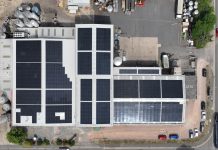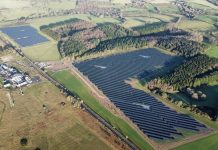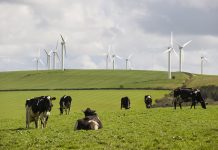
Mini nuclear power stations located closer to heat demand could help decarbonise energy, not just electricity, argues a new report from think tank Policy Exchange.
The report suggests small modular reactors (SMRs) could be based upon proven third generation pressurised water reactor (PWR) designs at a smaller scale. SMRs are typically defined as up to 300MWe.
While critics of nuclear power say it is insufficiently flexible to help balance a power system with high renewables penetration, Policy Exchange believes that SMRs would have a degree of flexibility, based on ramp rates of later PWRs and targeted design improvements.
If so, mini nuclear plants could help enable a greater penetration of renewables while providing baseload to manage period of low wind and light.
System stress events have historically taken place during evening winter peaks, but National Grid is now also challenged with high levels of solar during summer when demand is low.
At those times, Policy Exchange says SMRs could help to ease system stress by diverting electricity to charge batteries or to create hydrogen. That could be pumped into the existing gas grid to deliver lower carbon heat, the report suggests.
Meanwhile, if small reactors could be sited closer to heat demand, i.e. towns and cities, waste heat could be used in heat networks.
Policy Exchange accepts that small modular reactors may be initially more expensive than large nuclear power stations, no small admission, given the furore around the cost of Hinkley C. However, the report argues that with an efficient design and sufficient demand, cost curves for SMRs might follow the same trajectory as offshore wind.
As such, it recommends government funds design studies for SMRs, but puts the onus on designers to show how their reactors would deliver flexibility and wider system benefits.
The report also makes broader recommendations about low carbon energy policy post-Brexit.
It suggests scrapping renewables specific energy targets and focusing on decarbonisation at lowest cost; assessing the cost of intermittency, which would deliver a true cost comparator between low carbon technologies; and bringing carbon capture and storage back onto the political agenda – but to decarbonise industry and more carbon-intensive hydrogen production, rather than power generation.
Policy Exchange also suggests government commissions research into potential for long-term storage, initially focusing on the most feasible sites for pumped hydro, compressed air and heat storage.
Read the report here.
Related stories:
Aurora: EVs won’t require new power stations
As solar generation makes history, National Grid starts to feel the burn
Develop nuclear plan B in case ‘risky’ Hinkley C fails, warns NAO
Forget small nukes, ditch coal faster and focus on storage and DSR
Solar and storage ‘half the cost of Hinkley C’
EDF extends operating life of UK nukes
UK facing blackouts when coal plants close, engineers warn
‘Forget blackout Britain: Flexibility will solve capacity issue’
UK to lose 2GW of capacity as Eggborough consults on closure
Engie to close 1GW Rugeley power station
Society must rethink its approach to electricity use, says Ofgem networks chief
Follow us at @EnergystMedia. For regular bulletins, sign up for the free newsletter.



